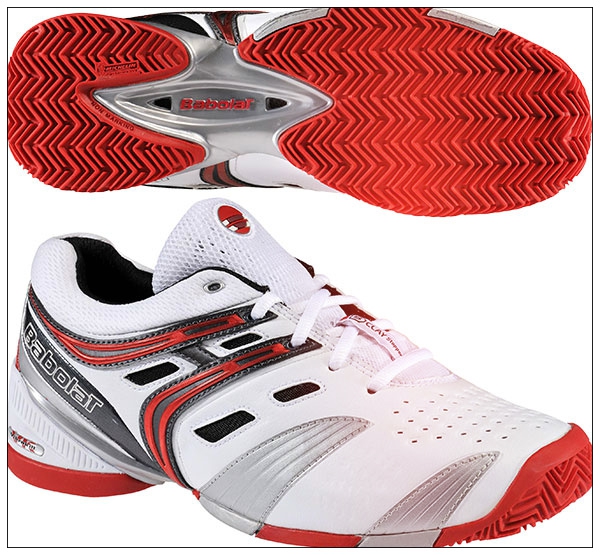The other day when I told my Wife I was going shopping for some new court shoes she asked “Why? Do you think looking good for the Judge will help?” She was obviously joking, but it made me think a bit about the term “court shoes”. As a tennis player my mind always pictures a tennis court. But we all know that several sports require a “court” on which to play. A defined set of parameters clearly marked so all contestants know the boundaries of competition. (We won’t get into the issue of line-calls here). There are also volleyball courts, basketball courts, handball courts, badminton courts, etc. Heck—now there are even “pickleball” courts! But for this article we are sticking with TENNIS court shoes.
Court shoes come in as many types as there are tennis courts:
If you play on hard (outdoor) courts the shoes are designed to soften the pounding a player’s body takes. These shoes will have extra cushioning and usually some type of additional mid-foot support. Outdoor tennis courts also have a rather rough surface, designed to grip the ball. Well—this surface also grips your court shoe’s soles in a very aggressive manner. Therefore, outdoor court shoes normally have a durable (read tough) rubber sole designed for better wear (many brands come with a 6 month outsole wear warranty). Because of the added cushioning and thickness of the materials used outdoor court shoes tend to weigh more than other types.
Clay-court players have access to court shoes designed specifically for them. Clay tennis courts (Har-Tru, red clay, etc.) are very soft and absorb much impact from player’s movements. This fact lessens the need for heavy-duty cushioning and hard-rubber soles. But clay presents its own set of unique challenges. Sliding, for example, is common (at least for the players who run FAST). Clay court shoes effectiveness, therefore, has much to do with the sole “tread pattern”. Most brands utilize a “herringbone” pattern which creates a controlled-skid, i.e., just enough grip to sense what’s going on without the danger of a sudden and unexpected “stop”! Clay court shoes will also have a less-pronounced arch area which is designed to prevent clay material build-up during play (no lumps under your feet). Finally, clay court shoes are normally a bit lighter than hard-court shoes.
Indoor tennis courts are popular in many parts of the world due to weather issues (heat, cold, rain, snow, etc.). Most indoor courts are hard surface (concrete). But they are often surfaced differently than “outdoor” hard courts. They may have a smoother finish (less silca). They may have some type of rubberized coating or even carpet applied. Indoor court shoes, therefore, are a nice asset for these surfaces. Indoor court shoes are rather like a cross between clay court shoes and hard-court court shoes. Their tread pattern is normally similar to hardcourt shoes but is made of a much softer rubber. Some even use natural “gum” rubber which feels exceptionally nice. They will be lightweight, have moderate cushioning, and provide good stability.
If you are fortunate enough to be a player on grass tennis courts there are shoes designed for you too! Grass court shoes are very similar to clay court shoes with one exception: their soles will usually have a either a smooth or a “bumpy” surface. They are designed to offer good grip and control, but without “grabbing” and to prevent damage to the court surface. Tennis shoes for grass tennis courts can be a bit tough to find, but they are out there!
So the next time you go looking for court shoes I hope you look closely at that shoe you are holding and appreciate its unique design elements—which were engineered specifically for the type of court on which you play your favorite sport!
Greg Christopherson lives in Oceanside, Calif. He is a local stringer, an avid tennis player and enjoys writing about his tennis adventures.

